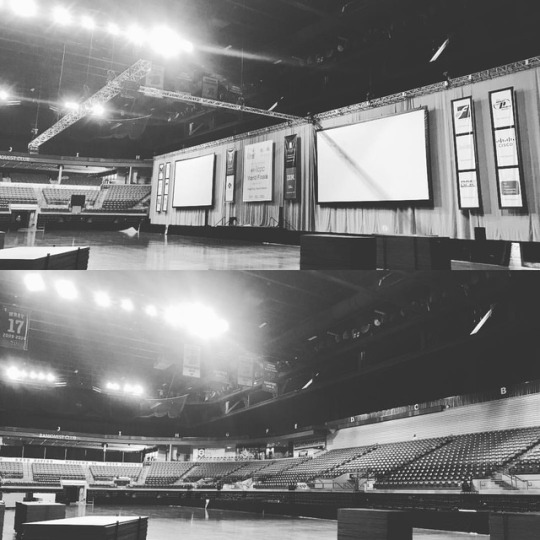#icpc2017
Photo

Before and after! Oh what a difference 4 hours makes. #depotav #powerhouseav #cle #icpc2017 #rushmoreplazaciviccenter #eventdone #getthisstuffonthetruck #ineedanap (at Rushmore Plaza Civic Center)
#cle#icpc2017#eventdone#powerhouseav#rushmoreplazaciviccenter#depotav#ineedanap#getthisstuffonthetruck
0 notes
Video
instagram
Who will you cheer for at #ICPC2017? Create a cheering party at home and share with the world! Watch this video to get started. #ICPCheer
0 notes
Photo

Already for the big show. Opening ceremonies for the International Collegiate Programming Contest 2017! Ready to rock this audio. #rcf #shure #allenheath #depotav #powerhouseav #icpc2017 #myjobiscool (at Rushmore Plaza Civic Center)
0 notes
Photo

Another great days work. 6 to go. #depotmusic #realevents #powerhouseav #icpc2017 #screensgalore #rcf (at Rushmore Plaza Civic Center)
0 notes
Text
South Dakota culture and history: The Pine Ridge Reservation
ICPCNews thanks the class taught by M. King Adkins at South Dakota School of Mines and Technology for highlighting some of the local attractions near this year’s contest
The Pine Ridge Indian Reservation is an Oglala Lakota Native American reservation, located on the edge of the Badlands in South Dakota, United States. According to the Tribal Government records, there are 38,000 people living on Pine Ridge Indian Reservation. The reservation is 2.7 million acres.
History
The reservation is historically known for being the site of the Wounded Knee Massacre. In the 1800’s, the US government was in an active war against most, if not all, known Native American tribes in the United States. This sparked a religious response from the Lakota tribes known as the Ghost Dance. The Ghost Dance spiritual movement believed that natives were being punished by the gods for giving up their traditional ways and customs, which is why they were forced onto reservations and defeated. Practitioners believed that if they practiced the Ghost Dance and gave up the ways of the white man, that their gods would create the world anew, and would destroy all non-believers, and all non-natives.
In the 1890’s, the US government became more and more concerned with this concept. There was an attempt to arrest Sitting Bull, as he was suspected of being a Ghost Dancer. His arrest raised tensions on the reservation, and on December 29, 1890, the US Army’s 7th Cavalry surrounded a group of Dancers at Wounded Knee Creek and demanded they give up their weapons. As that demand was made, a fight broke out between a native and a US soldier. A shot was fired, and it is unclear from which side, but a brutal massacre followed, killing an estimated 150 Natives, almost half of them women and children. The US lost 25 Calvary men.
Legal Battles
The Oglala Lakota are also known for their active fight against the United States government in reclaiming the Black Hills. In 1980 the Supreme Court ordered the federal government to pay the Lakota tribes millions of dollars in compensation for illegally confiscating the Black Hills, which are a holy place for the tribes. The Oglala wish to have the Black Hills returned to them and refuse to accept settlement money, which as of 2011, was 1.3 billion dollars. Other notable legal actions include the suit against major beer brewery companies and stores.
Pine Ridge Indian Reservation's county is ranked among the poorest in the country, and one in four children born on the reservation suffers from fetal alcohol syndrome or a fetal alcohol spectrum disorder. In attempts to make things better, the tribe has banned liquor. The Oglala argued that the sale of beer in the town of White Clay, Nebraska on the Nebraska border was being sold by merchants who were fully aware the beer would be smuggled onto the reservation. Unfortunately, the suit was dismissed in 2012.
Story courtesy of SDSM&T Students
0 notes